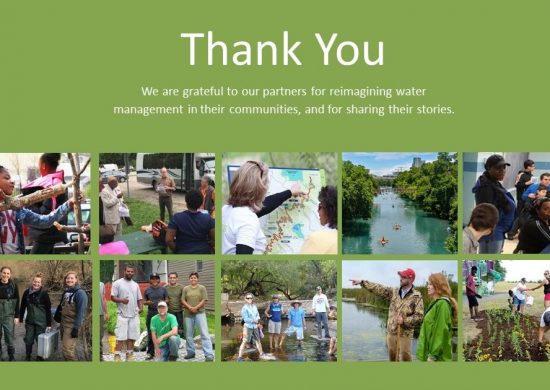Yesterday, the Johnson Foundation released the capstone report of its multi-year effort to outline smart water policy options for the U.S. for the future. I participated in that effort, initially on behalf of the Natural Resource Defense Council’s water program and then on behalf of the Office of Water at EPA, as did my colleague, David Beckman. It was a real pleasure to have the opportunity to engage with the impressive group of thought leaders that Lynn Broaddus at Johnson convened for the discussions that led up to this report.
The key recommendations are as follows:
- Optimize the use of available water supplies
- Transition to next-generation wastewater systems
- Integrate the management of water, energy and food production
- Institutionalize the value of water
- Create integrated utilities
These recommendations are not particularly radical, but they are compelling. They represent the views of forward thinking water managers, utility directors, scientists, and policy makers from across the U.S. There is a growing sentiment among such experts that smart thinking around water resource management takes the long view and the integrated view. Instead of thinking 5 to 10 years out, smart water managers plan 30 or 50 years out. They plan for population growth, for aging of infrastructure and for climate change. They also think about water issues along with energy, transportation, economic development, and social equity. What the report clearly demonstrates though is that these ideas are not merely ideas. They have already been tested by communities across North America, which have seen the benefits of integrated approaches — cleaner waterways, revitalized waterfronts, efficiencies in infrastructure spending, reduced energy costs, fewer greenhouse gas emissions, enhanced water security, and an improved quality of life. The Navigating to New Shores report provides lots of examples. But let me just mention a couple of the more innovative approaches that illustrate the kinds of benefits our society could obtain from implementing the report’s recommendations.
In Vancouver, British Columbia, Neighborhood Energy Utility is recovering enough waste heat from untreated sewage to provide 70 percent of the energy needs of its customers. Other waste to energy innovations included in the report make use of food waste, landfill biogas, and animal waste to reduce water and waste pollution and greenhouse gas emissions at the same time that they generate the power that communities need. The Pisces Foundation sponsored a dialogue on these issues at the World Water Week in Stockholm earlier this month.
In these days of increasingly frequent droughts in many parts of the country, saving water is often at least as important as saving energy, and, of course, both translate into saving money. The tailored water strategy that El Segundo, California’s water recycling facility uses to provide nonpotable supplies to its customers that are custom made to be “fit for use” saves enough potable tap water to serve 60,000 customers annually. Whether it is eliminating treatment trains that are not needed for some uses or enhancing water supplies with rain water or treatment plant effluents, utilities are finding innovative ways to meet their customer’s needs despite the growing challenges they face. The Pisces Foundation recently funded a report (noted by the New York Times editorial board here) outlining those opportunities in California that was produced by the Pacific Institute and the Natural Resources Defense Council, with assistance from Professor Robert Wilkinson at the University of California, Santa Barbara.
So while there are lots of communities making these smart decisions already, these approaches are not yet business as usual for most cities and towns. That’s what we need to change. Since every community needs water, every community also needs to make smart decisions about how to ensure that it has access to clean, safe water resources for its human population and its ecosystem. As a nation, we need to enable good decisionmaking with good science, a clear legal framework, innovative technology, a broad portfolio of financing options, accessible decision support tools, and support for one another as we move forward together to face these challenges. The Johnson Foundation report shows us the way ahead. It is up to all of us to take it.



